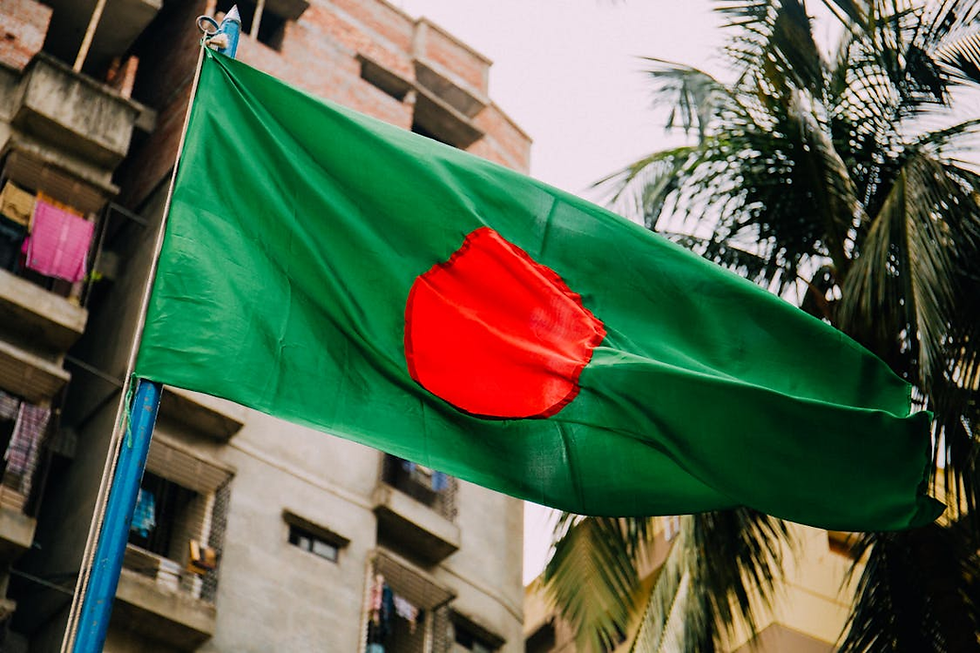How Riots Revolutionise
- Kai Torrie

- Jun 9, 2020
- 4 min read
Updated: Dec 22, 2024
In the wake of George Floyd's death, protests have broken out on an international scale. Many are describing the demonstrations as "riots". This article explores the effectiveness of rioting over time, as Kai Torrie identifies some of the most prominent activist movements, and focuses on the change they brought about. However, while it is easy to reflect favourably on change that has already occurred, it is also vital to consider the social and political progress that needs to be made in the future.
A riot is described as a ‘tumultuous disturbance of the public peace by three or more persons assembled together and acting with a common intent’. The word “tumultuous” may have negative connotations, but does not necessarily equate to violence. Riots are not always violent - in fact, they are almost never violent, unless those partaking are provoked. This article will discuss the history of riots, exploring how they have helped society to progress.
In 2014, Michael Brown (an unarmed 18 year old black man) was shot six times by Darren Wilson (a white police officer) in Ferguson, Missouri. Wilson drove up to Brown and his friend, both of which were walking in the road, and ordered them onto the sidewalk. Words were exchanged, and Wilson shot at Brown from inside the patrol car. As the two men began to flee, Wilson exited the car and continued his firing, fatally wounding Brown. The Ferguson riots shed light on America's broad racial divide, which - despite the strides made by the Civil Rights Movement of the 1960s - still exists. The uprisings also brought attention to the aggressive tactics and over-militarization of civilian police in America. As a result of the events in Ferguson, President Obama ordered a review of the military equipment supplied to police.
The LA riots erupted after the acquittal of four LAPD officers in the beating of Rodney King on April 29, 1992. 53 died, and over 2000 were injured during the uprisings, and the city lost over $1 billion in property damage due to looting and arson. In the six days that followed, the riots shed light on police abuse, poverty, lack of economic opportunity, and a sense of disenfranchisement among African-Americans in the community. Rioting subsided after soldiers from the California Army National Guard, the 7th Infantry Division and Marines from the 1st Marine Division were called in to quell the violence. Local police were simply outnumbered. Afterward, the LAPD and city of Los Angeles made significant changes - more minorities were encouraged to join the police force and police chief Daryl Gates resigned. The officers were re-tried by the U.S. Department of Justice. Of the four, two were found guilty and sentenced to 32 months in prison. The LA riots were given context by the continuous 24-hour news cycle that didn't exist during previous periods of civil unrest. They were also a window into the complexities of race in the diverse, multiracial and multiethnic city.

During the 1960s, France entered into a period of stability—the economy improved, President Charles de Gaulle was a popular ruler, and the French Empire was abolished. However, discontent simmered among students who were critical of the country's outdated university system and unable to find jobs once they graduated. The unrest in Paris in May 1968 began with a series of student occupation protests against capitalism, consumerism and traditional institutions, values and order. The protests then spread from students to factory workers. Up to 11 million people went on strike for two weeks (approximately 22% of the population of France at the time). The protests were met with forceful confrontation by university administrators and police, and it was not long before de Gaulle put his foot down as well. When he hinted at using the military to restore order and announced new elections, the most radical students called for revolution, but they soon lost the support of mainstream communist and trade union leaders who feared they would be swept away in a revolution led by anarchists and Trotskyites. Loyal Gaullists and middle-class citizens rallied around the president and the labor strikes were eventually abandoned. As the uprising lost steam, student protests were also banned, and by June 12, 1968, the last remaining protesters were evicted from the Sorbonne. After the protests, Gaullists made a series of concessions to the protesting groups: these included higher wages, and improved conditions for workers. They also passed a reform bill intended to modernize higher education.
The Stonewall riots are considered to be the catalyst for LGBT civil rights in the United States. At the time of the riots, there were few places where people could be openly gay. Homosexuality was prohibited in public by law, and gay establishments were regularly raided and shut down. On June 28, 1969, a group of customers at a popular gay bar, namely the Stonewall Inn, in Greenwich Village stood up to the police during a raid. The 200 patrons refused to cooperate, and, as word spread throughout New York, they were soon joined by others in confronting the police, who were quickly outnumbered. Protesters threw bottles at police officers who could do nothing but barricade themselves inside the Stonewall for their own safety. The streets were cleared by 4 am that morning, but over the next few nights, protesters numbered in the thousands and the LGBT movement was born. By 1970, the first gay pride parades in U.S. history took place in Los Angeles, Chicago, San Francisco, and near the Stonewall Inn in New York.
It’s easy to reflect on these riots, and admire how far we have come. The sad truth is that there is still much more progress to be made, as there is still a need to protest against police violence, homophobia, white supremacy, and racism. The Black Lives Matter movement recognises this need to do better, as it is simply not enough to deny that you are racist or homophobic. Instead, one must be actively anti-racist and anti homophobic. It is crucial to unlearn years of systematic indoctrination within both education and justice systems across the globe, as information is so often withheld from us. Often, UK students are not taught about the country’s colonial history, and it is easy to assume that it is only the US which has a problem with police brutality. This is simply not the case, as everyone needs to take action, through any viable means, to seek significant societal reform.
#protests #georgefloyd #justiceforgeorgefloyd #riots #protestors #equality #demonstrators #politics #justice #discrimination #history #equalrights #lgbt #racialequality #racism #currentaffairs #pridemonth #lgbtqrights #lgbtrights #blacklivesmatter #stonewall #stonewallriots #policebrutality #educationsystem

_edited.png)



Comments